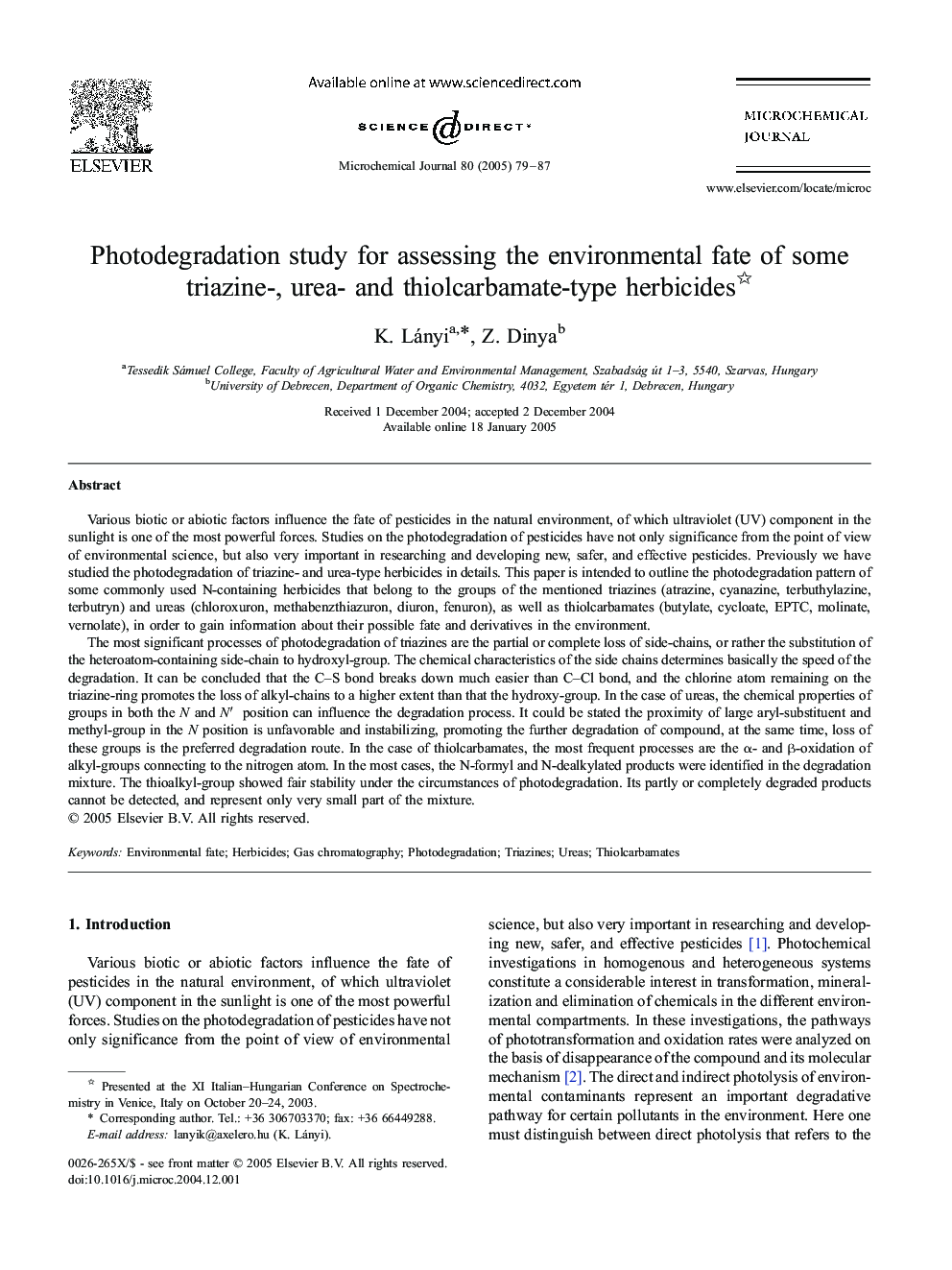| Article ID | Journal | Published Year | Pages | File Type |
|---|---|---|---|---|
| 10557273 | Microchemical Journal | 2005 | 9 Pages |
Abstract
The most significant processes of photodegradation of triazines are the partial or complete loss of side-chains, or rather the substitution of the heteroatom-containing side-chain to hydroxyl-group. The chemical characteristics of the side chains determines basically the speed of the degradation. It can be concluded that the C-S bond breaks down much easier than C-Cl bond, and the chlorine atom remaining on the triazine-ring promotes the loss of alkyl-chains to a higher extent than that the hydroxy-group. In the case of ureas, the chemical properties of groups in both the N and NⲠposition can influence the degradation process. It could be stated the proximity of large aryl-substituent and methyl-group in the N position is unfavorable and instabilizing, promoting the further degradation of compound, at the same time, loss of these groups is the preferred degradation route. In the case of thiolcarbamates, the most frequent processes are the α- and β-oxidation of alkyl-groups connecting to the nitrogen atom. In the most cases, the N-formyl and N-dealkylated products were identified in the degradation mixture. The thioalkyl-group showed fair stability under the circumstances of photodegradation. Its partly or completely degraded products cannot be detected, and represent only very small part of the mixture.
Related Topics
Physical Sciences and Engineering
Chemistry
Analytical Chemistry
Authors
K. Lányi, Z. Dinya,
